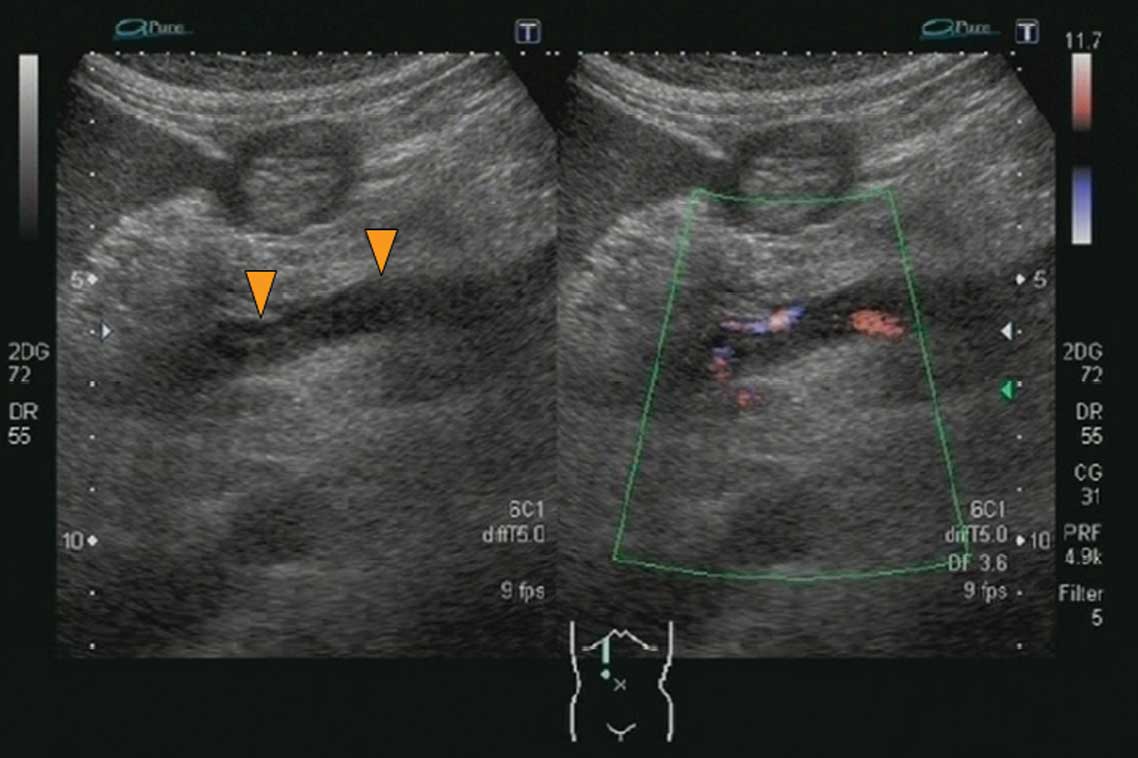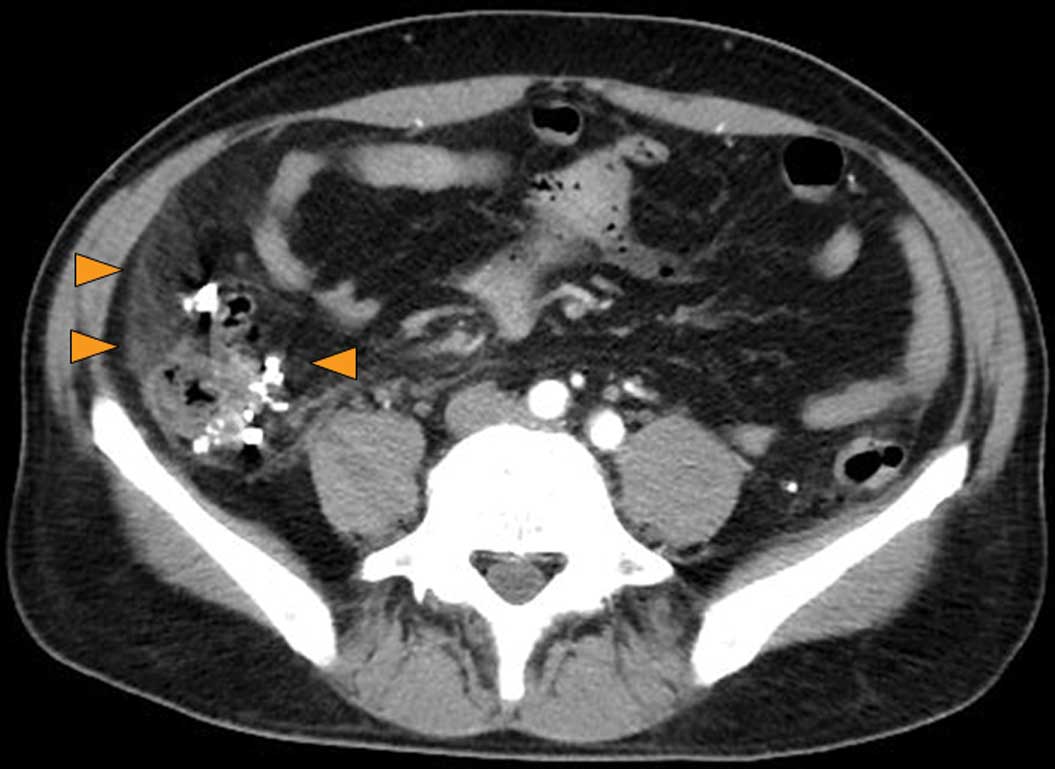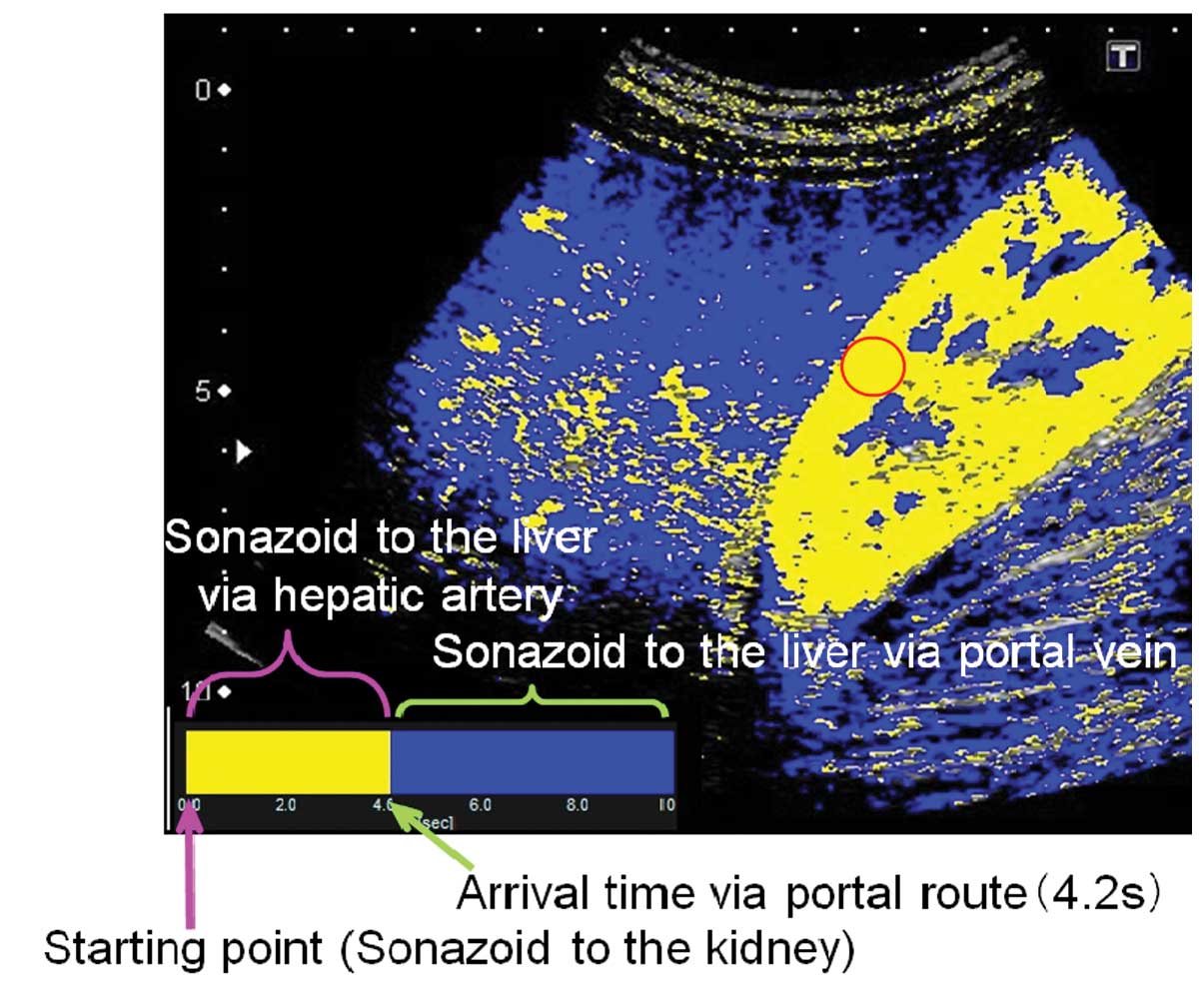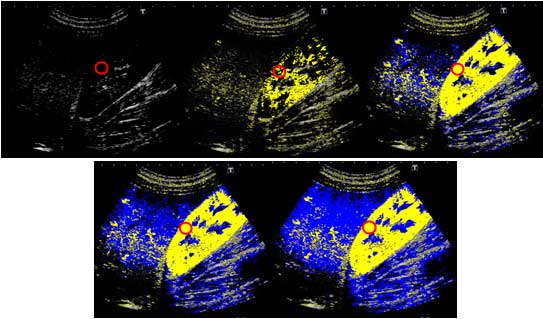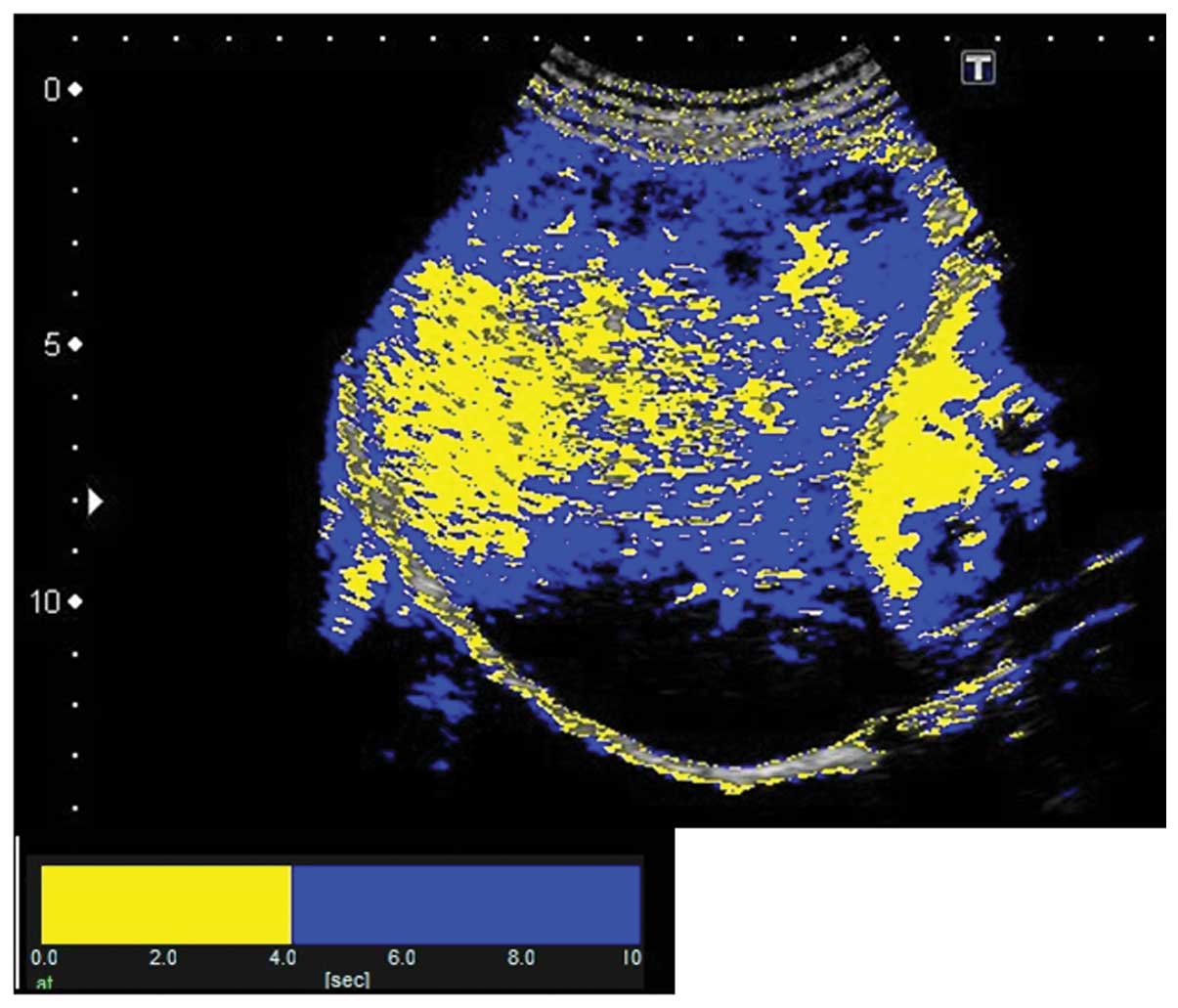Visualization of segmental arterialization with arrival time parametric imaging using Sonazoid‑enhanced ultrasonography in portal vein thrombosis: A case report
- Authors:
- Published online on: December 21, 2012 https://doi.org/10.3892/etm.2012.874
- Pages: 673-677
Metrics:
Total
Views: 0 (Spandidos Publications: | PMC Statistics:
)
Total PDF Downloads: 0 (Spandidos Publications: | PMC Statistics:
)
Abstract
A 55‑year‑old male was admitted in mid‑April 2011 with a fever of >39˚C and pain in the lower right abdomen. A medical examination revealed sepsis originating from colonic diverticulitis. Abdominal B‑mode ultrasonography (US) performed on admission detected thrombi in the superior mesenteric vein and in the right branch of the hepatic portal vein. Arrival time parametric imaging (At‑PI) using Sonazoid‑enhanced US showed arterialization of the entire right lobe of the liver. The treatment for the sepsis and portal thrombi that had been started upon admission dissolved the thrombi by day 22, with the exception of one thrombus in the P8 branch of the portal vein. At‑PI performed on the same day confirmed arterialization in segment 8, but portal vein dominance was restored elsewhere. When the blood inflow from the hepatic portal vein was reduced, the hepatic arterial blood flow was increased to compensate for the reduction in the total blood supply. The At‑PI functions used in the Sonazoid‑enhanced US were simple yet effective in visualizing the changes in the hepatic hemodynamics caused by the portal thrombus.




